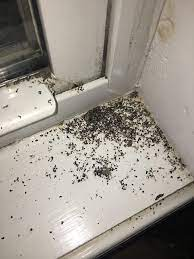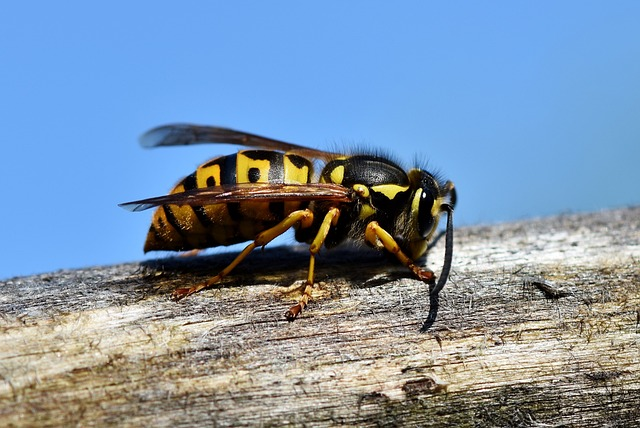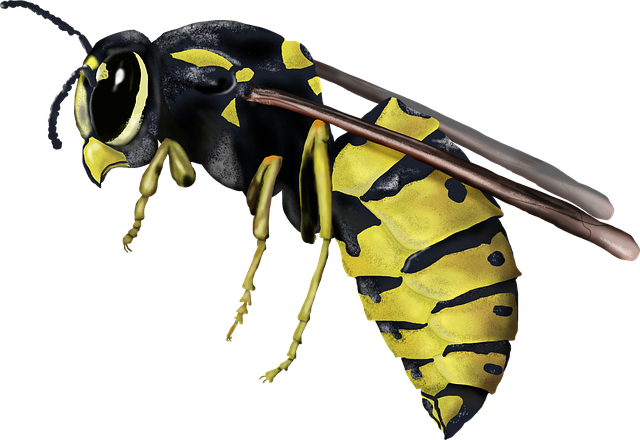Wasp Stings are no fun!
Introduction
In the rolling plains and vibrant cities of Oklahoma, where the red earth meets the endless sky, a less welcome aspect of nature often intrudes upon our daily lives – the presence of wasps. These stinging insects, ranging from the formidable bald-faced hornets to the solitary mud daubers, can disrupt the peace of urban and rural settings. Their nests, whether delicately hanging under eaves or concealed in quiet corners, are not just an eyesore but a genuine hazard, especially for those with allergies to stings.
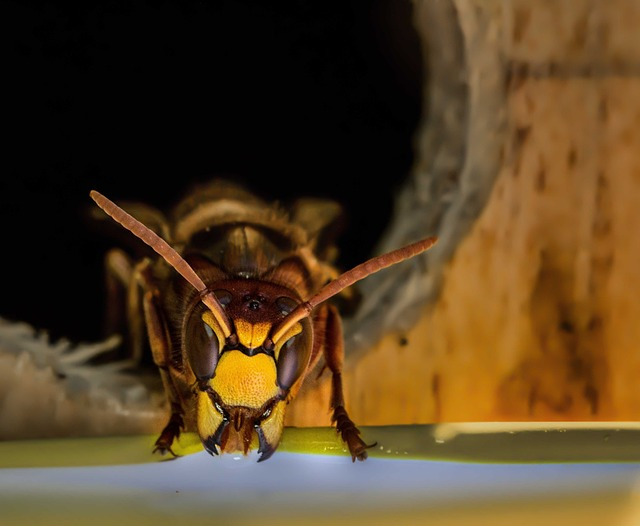
At BugDaddy OK, we recognize the importance of safe and effective wasp control in maintaining the tranquility and safety of your Oklahoma home. Wasps, unlike bees, can sting multiple times, turning a simple backyard barbecue or a quiet afternoon in the garden into an unpleasant experience. Understanding the behavior of these insects, from the way they build their nests to the signs of an active wasp nest, is crucial in dealing with them effectively. Additionally, it is vital to be aware of the potential for allergic reactions to wasp stings and the importance of recognizing and treating these reactions promptly.
This comprehensive guide is designed not only to inform but also to empower Oklahoma residents. We delve into the specifics of the most common wasp species found in the region, including the aggressive bald-faced hornets, the architecturally inclined paper wasps, and the mud-loving mud daubers. By identifying these species and understanding their habits, you can better prepare to tackle any wasp-related issue.
We also address the pressing concern of increased wasp activity, especially during the warmer months when wasps are most active. From spotting the early signs of a wasp infestation to taking practical steps to deter and eliminate these stinging pests, this guide offers a wealth of knowledge. We explore both do-it-yourself methods, such as homemade wasp traps and sprays, and professional solutions provided by experienced services like Flatline Pest Control.
We aim to provide you with a clear, actionable plan to deal with wasps in a manner that is both safe and effective. Whether it’s a lone wasp nest hanging from a tree branch or a full-blown infestation buzzing around your property, this guide will equip you with the tools and knowledge you need to reclaim your space. Let’s embark on this journey to a wasp-free environment, ensuring that your time outdoors is enjoyable and, most importantly, safe from the sting of these unwelcome guests.
Understanding Your Enemy: Types of Wasps in Oklahoma
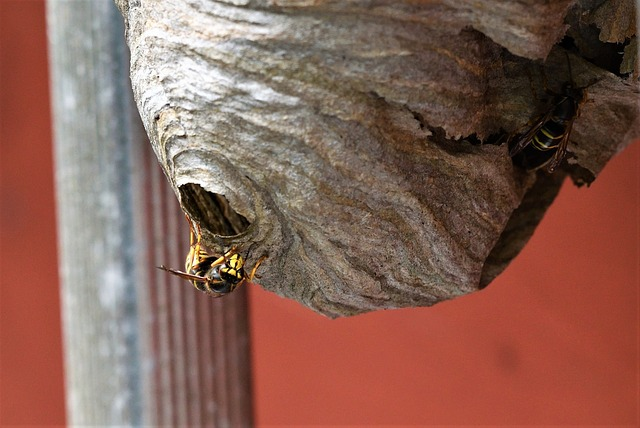
When dealing with wasps, it’s important to recognize the different types and their behaviors. Wasps can be aggressive, especially when their nests are disturbed. They can sting multiple times, causing pain and potential allergic reactions. Proper identification and caution are essential to avoid stings.
Other stinging insects, such as fire ants, can also pose a threat and require similar caution. Fire ants are known for their painful stings and aggressive behavior when their mound is disturbed.
Bald-Faced Hornets: The Black and White Menace
Unlike bees, bald-faced hornets, with their distinctive white and black patterns, are aggressive defenders of their large, paper-like nests. Often found in tree branches or under eaves, these nests can host a significant number of stinging wasps, posing a risk to those nearby. A bald-faced hornet sting is generally more painful than a bee sting and can cause more severe allergic reactions, making it crucial to seek medical help if symptoms such as large local reactions or anaphylaxis occur.
Paper Wasps: The Umbrella Nests Architects
Paper wasps, known for their open, umbrella-shaped nests, are less aggressive but can sting when threatened. These nests, often found in sheltered areas like eaves or attic vents, are common sights in Oklahoma homes.
Both bee and wasp stings can cause significant pain and require prompt treatment.
Mud Daubers: Solitary but Daunting
Mud daubers, identifiable by their long, slender bodies, build small mud nests in sheltered locations. While less aggressive, their presence can be unnerving, especially when nests accumulate over time.
Understanding Wasp Stings
What is a Wasp Sting?
A wasp sting is a painful and potentially serious injury caused by the venom of a wasp, typically a yellowjacket, hornet, or paper wasp. Wasps are equipped with a stinger that they use for self-defense, and their venom can cause significant pain, swelling, and redness at the sting site. Unlike bees, which can sting only once, wasps can sting multiple times, injecting venom with each sting. This venom can trigger an allergic reaction in some individuals, ranging from mild irritation to a severe allergic reaction, which can be life-threatening if not treated promptly. Recognizing the symptoms and knowing how to respond is crucial in managing wasp stings effectively.
Detecting the Danger: Signs of Wasp Infestation
Wasps flying in and out of a specific area often indicate an active wasp nest. Look for nests under eaves, within attics, or on tree branches. A sudden influx of dead wasps in your home could also signal an infestation. Recognizing these signs early is crucial to prevent a full-blown invasion. Additionally, it is important to recognize signs of insect stings and take appropriate action to prevent infestations.
When Wasps Invade: Dealing with Increased Wasp Activity
DIY Solutions: Setting Up Wasp Traps and Treating Wasp Sting
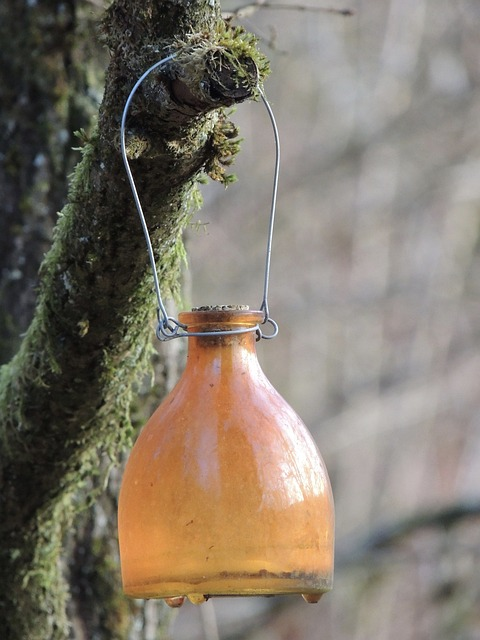
Homemade wasp traps, crafted from simple household items, can effectively lure and trap wasps. Hang wasp traps around your property, especially in areas where wasp activity is high. Additionally, spraying wasp nests during the evening can help reduce their numbers. Wasp sprays that kill wasps instantly are available, but caution is advised due to their toxicity. It’s also important to have a bee sting kit on hand, especially if you or someone nearby is allergic to stings.
Limitations and Risks: When to Call a Professional for Severe Allergic Reaction
For large or hard-to-reach nests, like those of bald-faced hornets, professional intervention from services like Flatline Pest Control is recommended. Professionals are equipped with the right tools and protective gear to safely remove wasp nests.
Professional Intervention: When to Seek Help in Oklahoma
Choosing the Right Pest Control Service
Selecting a reputable pest control service is crucial. Look for licensed professionals with experience in dealing with wasps in Oklahoma. Flatline Pest Control, for instance, offers specialized services to tackle different wasp species effectively. Additionally, it is important to choose a service experienced in handling severe allergic reactions to stings.
The Professional Approach to Bee and Wasp Stings Removal
Professionals typically inspect the property to identify all wasp nests. They then use targeted treatments, like professional-grade wasp spray or mechanical removal, ensuring the complete eradication of the infestation.
Additionally, during severe allergic reactions to wasp stings, it is crucial to monitor blood pressure, as dangerously low blood pressure can occur and require immediate treatment to prevent life-threatening consequences.
Preventive Measures: Keeping Wasps at Bay to Prevent Future Allergic Reactions
Landscaping and Home Maintenance
Regular maintenance, like trimming tree branches near your home and sealing cracks, can deter wasps from nesting. Additionally, installing fake wasp nests can prevent new colonies since wasps are territorial and unlikely to build near other nests.
Natural Repellents and Deterrents
Certain natural remedies can help prevent wasps. For instance, essential oils like peppermint oil are known to deter wasps. Regularly inspecting and removing early nests also discourages further nesting.
Using natural repellents is crucial to prevent severe allergic reactions to wasp stings.
FAQs
Q: What’s the best time to spray wasp nests?
A: The ideal time to spray wasp nests is during the evening when wasps are less active. Ensure you’re wearing protective clothing and follow the spray’s instructions carefully.
Q: Are homemade wasp traps effective?
A: Yes, homemade wasp traps can be effective for capturing and reducing the number of wasps. However, they are more suited for smaller infestations.
Q: Can I remove a wasp nest by myself?
A: It’s possible to remove smaller, accessible nests yourself. However, for larger nests or those in difficult-to-reach areas, it’s safer to call professionals like Flatline Pest Control.
Q: How do I differentiate between wasps and honey bees?
A: Wasps tend to have a slender body and less hair compared to honey bees. Unlike bees, which leave their stinger behind, wasps can sting multiple times.
Q: Is it necessary to remove a wasp nest in winter?
A: While wasps are less active in winter, it’s still advisable to remove nests to prevent a resurgence in the spring.
Q: Why is it important to recognize and treat bee stings?
A: Recognizing and treating bee stings is crucial because they can cause severe allergic reactions, such as anaphylaxis and renal insufficiency. Symptoms like difficulty breathing, swelling, and dizziness require immediate medical attention. Proper first-aid measures, such as removing the stinger and applying ice, can help manage the reaction and prevent complications.
Conclusion
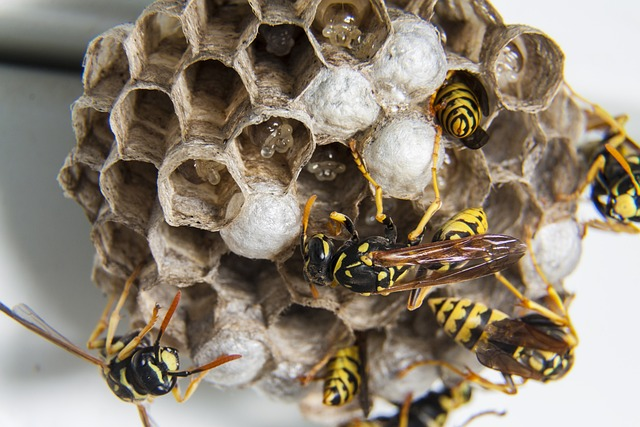
As we conclude our journey through the realm of wasp control in Oklahoma, it’s vital to remember that our battle is not just against the familiar yellow jackets but also against a variety of other wasps that share our spaces. The key to coexisting peacefully doesn’t always lie in aggressive tactics, but rather in understanding and outsmarting these winged adversaries.
The use of a homemade wasp trap, for instance, is a testament to human ingenuity. Simple yet effective, these traps can be crafted from everyday items like a spray bottle, luring in wasps with attractants and trapping them before they can cause harm. This method, along with regular maintenance of your property, like properly sealing garbage cans to not attract wasps, forms the first line of defense in your wasp control strategy.
However, when the situation escalates, and you face an active nest of yellow jackets or other aggressive wasp species, remember that caution is paramount. Products that claim to kill wasps instantly can be effective, but they also require careful handling to avoid unintended consequences like harm to beneficial insects or risks to your health.
In your quest to protect your home and loved ones from the menace of wasp stings, it’s essential to balance proactive measures with safe practices. Whether you choose a DIY approach with a homemade wasp trap or a more direct method with a spray bottle of insecticide, the goal remains the same: to maintain a living space where the beauty of Oklahoma’s outdoors can be enjoyed without the looming threat of stinging insects.
Through vigilance, preparedness, and a deep respect for nature – even its more challenging aspects – we can enjoy our Oklahoma homes in peace and comfort. Remember, the key to effective wasp control lies not just in the tools we use, but in our approach to coexisting with the natural world, always mindful of our impact and our safety.
Have you ever asked yourself How to get rid of wasps inside?
Easy, open the front door 🙂

